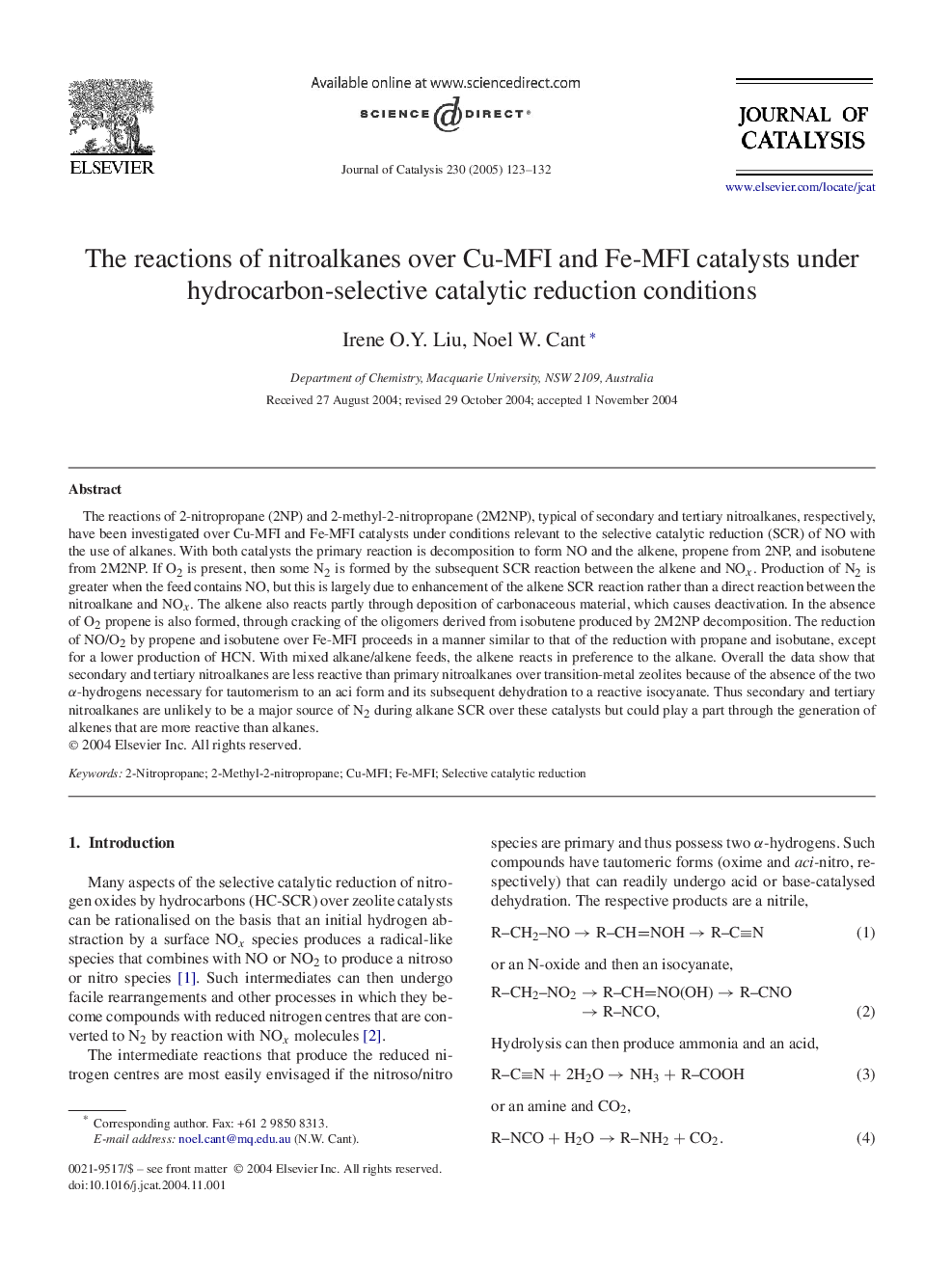| کد مقاله | کد نشریه | سال انتشار | مقاله انگلیسی | نسخه تمام متن |
|---|---|---|---|---|
| 10244534 | 47692 | 2005 | 10 صفحه PDF | دانلود رایگان |
عنوان انگلیسی مقاله ISI
The reactions of nitroalkanes over Cu-MFI and Fe-MFI catalysts under hydrocarbon-selective catalytic reduction conditions
دانلود مقاله + سفارش ترجمه
دانلود مقاله ISI انگلیسی
رایگان برای ایرانیان
کلمات کلیدی
موضوعات مرتبط
مهندسی و علوم پایه
مهندسی شیمی
کاتالیزور
پیش نمایش صفحه اول مقاله

چکیده انگلیسی
The reactions of 2-nitropropane (2NP) and 2-methyl-2-nitropropane (2M2NP), typical of secondary and tertiary nitroalkanes, respectively, have been investigated over Cu-MFI and Fe-MFI catalysts under conditions relevant to the selective catalytic reduction (SCR) of NO with the use of alkanes. With both catalysts the primary reaction is decomposition to form NO and the alkene, propene from 2NP, and isobutene from 2M2NP. If O2 is present, then some N2 is formed by the subsequent SCR reaction between the alkene and NOx. Production of N2 is greater when the feed contains NO, but this is largely due to enhancement of the alkene SCR reaction rather than a direct reaction between the nitroalkane and NOx. The alkene also reacts partly through deposition of carbonaceous material, which causes deactivation. In the absence of O2 propene is also formed, through cracking of the oligomers derived from isobutene produced by 2M2NP decomposition. The reduction of NO/O2 by propene and isobutene over Fe-MFI proceeds in a manner similar to that of the reduction with propane and isobutane, except for a lower production of HCN. With mixed alkane/alkene feeds, the alkene reacts in preference to the alkane. Overall the data show that secondary and tertiary nitroalkanes are less reactive than primary nitroalkanes over transition-metal zeolites because of the absence of the two α-hydrogens necessary for tautomerism to an aci form and its subsequent dehydration to a reactive isocyanate. Thus secondary and tertiary nitroalkanes are unlikely to be a major source of N2 during alkane SCR over these catalysts but could play a part through the generation of alkenes that are more reactive than alkanes.
ناشر
Database: Elsevier - ScienceDirect (ساینس دایرکت)
Journal: Journal of Catalysis - Volume 230, Issue 1, 15 February 2005, Pages 123-132
Journal: Journal of Catalysis - Volume 230, Issue 1, 15 February 2005, Pages 123-132
نویسندگان
Irene O.Y. Liu, Noel W. Cant,